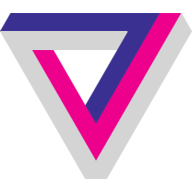Tracking the new Creator Economy
The dawn of the Creator Economy shouldn't really be seen as some kind of get-out-of-jail-free card.

The Attention Economy - the old social media business models based on the idea of selling eyeballs at scale to advertisers, is rapidly shifting towards The Creator Economy - taking a commission of what creators on a platform are getting paid directly by fans.
Social media platforms, fearing that their best content creators will simply migrate themselves and their content to more financially lucrative platforms are quickly offering creators new tools to directly monetise their content.
Twitter recently announced a new feature called Super Follows which will allow Twitter users to charge followers and give them access to extra content. That could be bonus tweets, access to a community group, subscription to a newsletter, or a badge indicating your support. In a mockup screenshot, Twitter showed an example where a user charges $4.99 per month to receive a series of perks. Twitter sees it as a way to let creators and publishers get paid directly by their fans.
For us - the Creator Economy was announced way back in 2017 by YouTuber Casey Neistat when he released this video:
In reality though - the dawn of the Creator Economy shouldn't really be seen as some kind of get-out-of-jail-free card for those worried about the future of work.
Creating compelling content that will attract a loyal audience of fans is bloody difficult; there are far easier ways to make money let me assure you.
Only a very small percentage of content creators will ever be able to turn their craft into a viable business, for the rest - the road ahead will be long and painful.
The Creator Economy however needs to command a broader perspective - this isn't just about creating fun videos on YouTube involving pranks and travelling to exotic locations.
The Creator Economy is more related to an interesting business model innovation that we think can easily extend to all sorts of different areas of influence.

/https%3A%2F%2Fspecials-images.forbesimg.com%2Fimageserve%2F602fd9ae6c195c8750354b5e%2F0x0.jpg)





